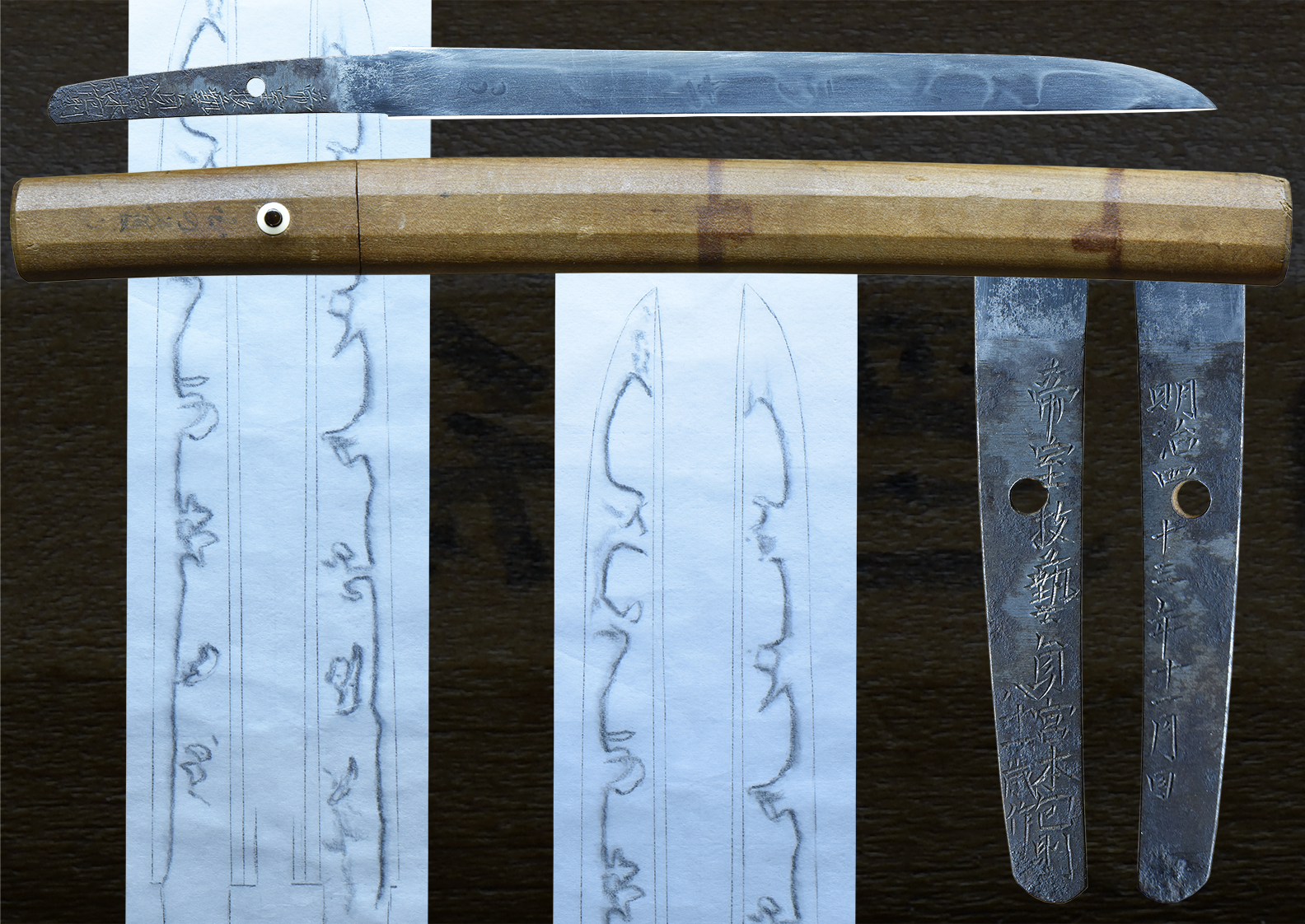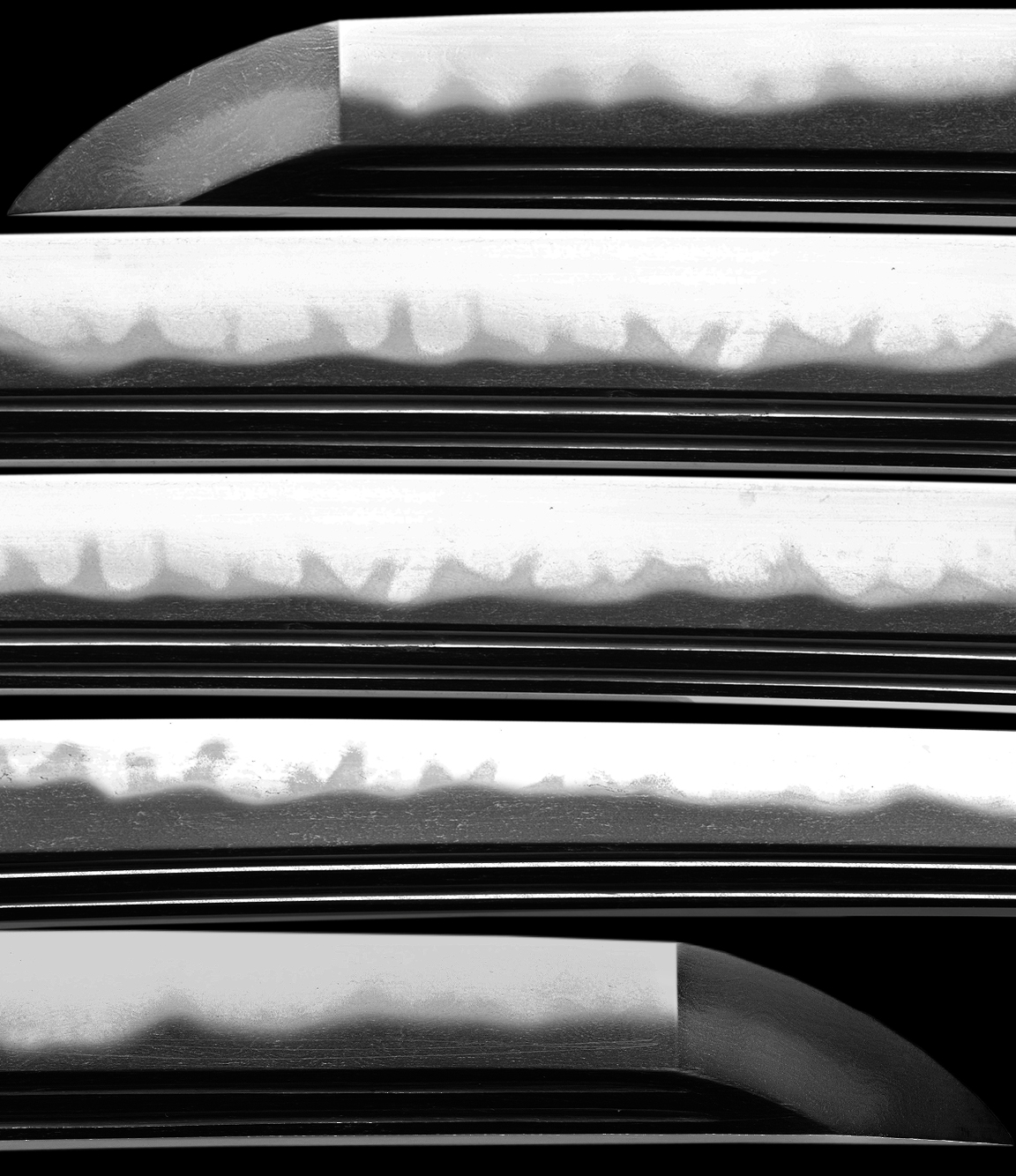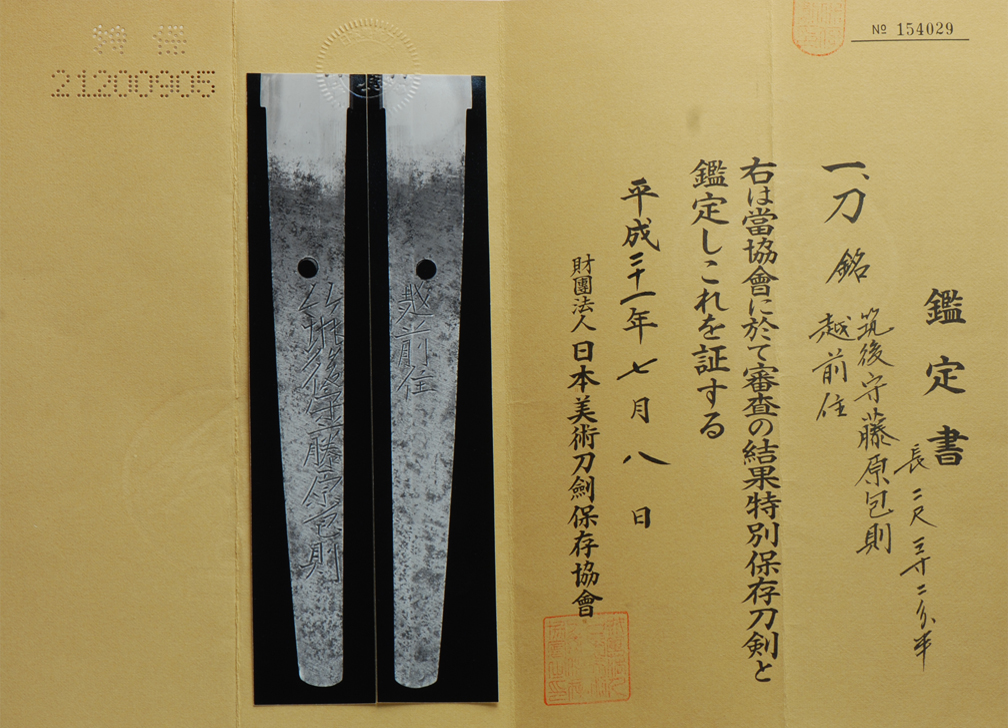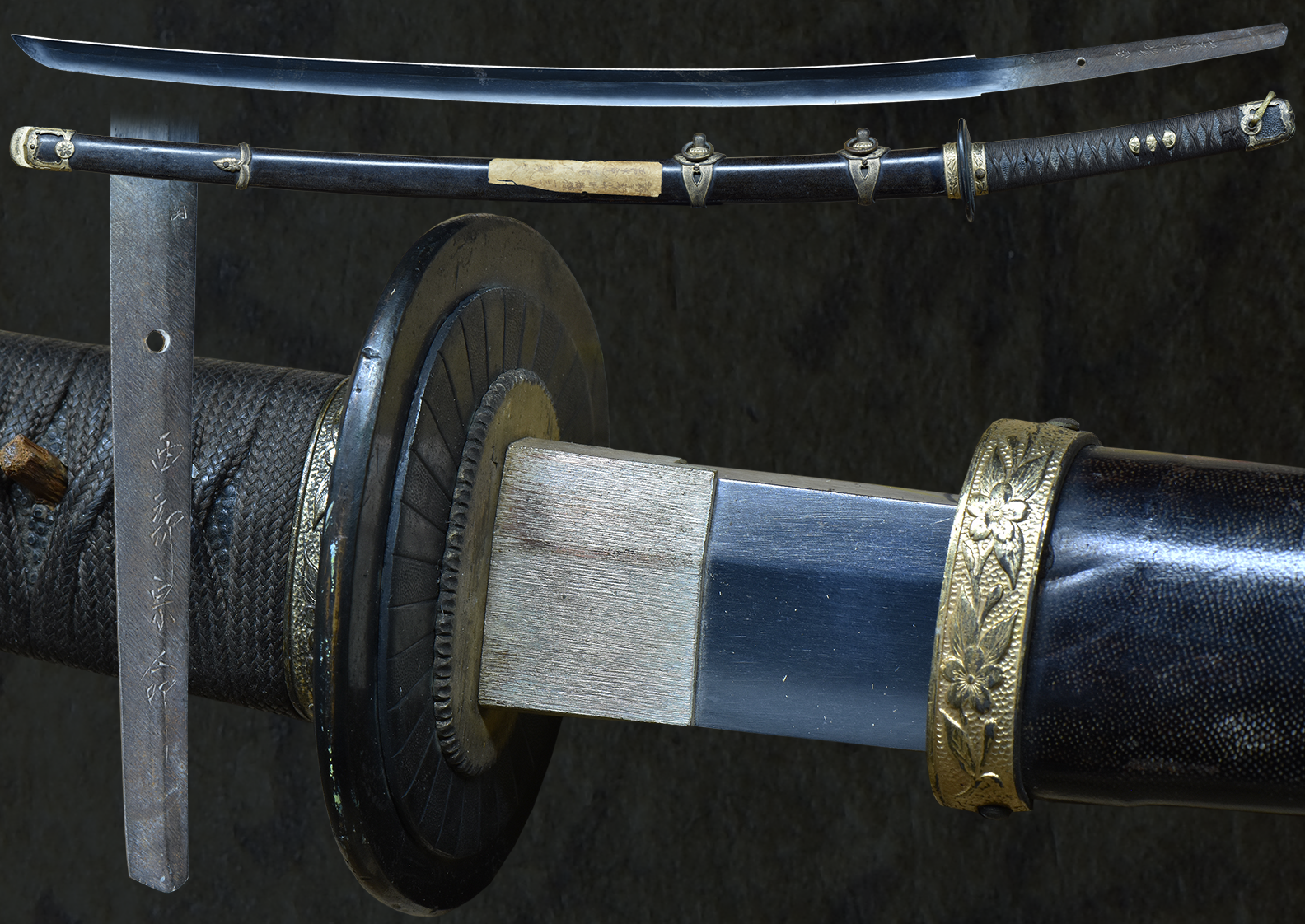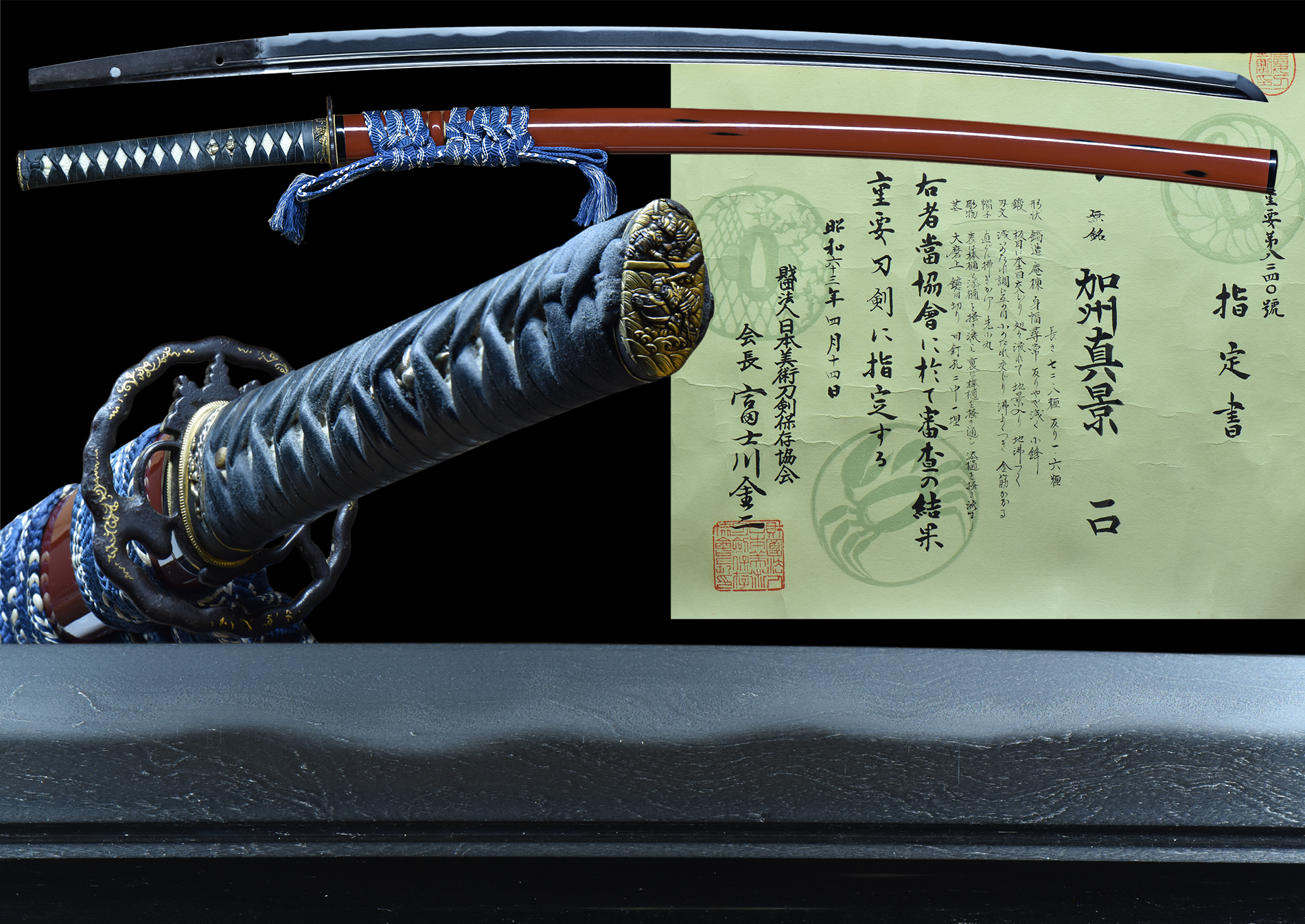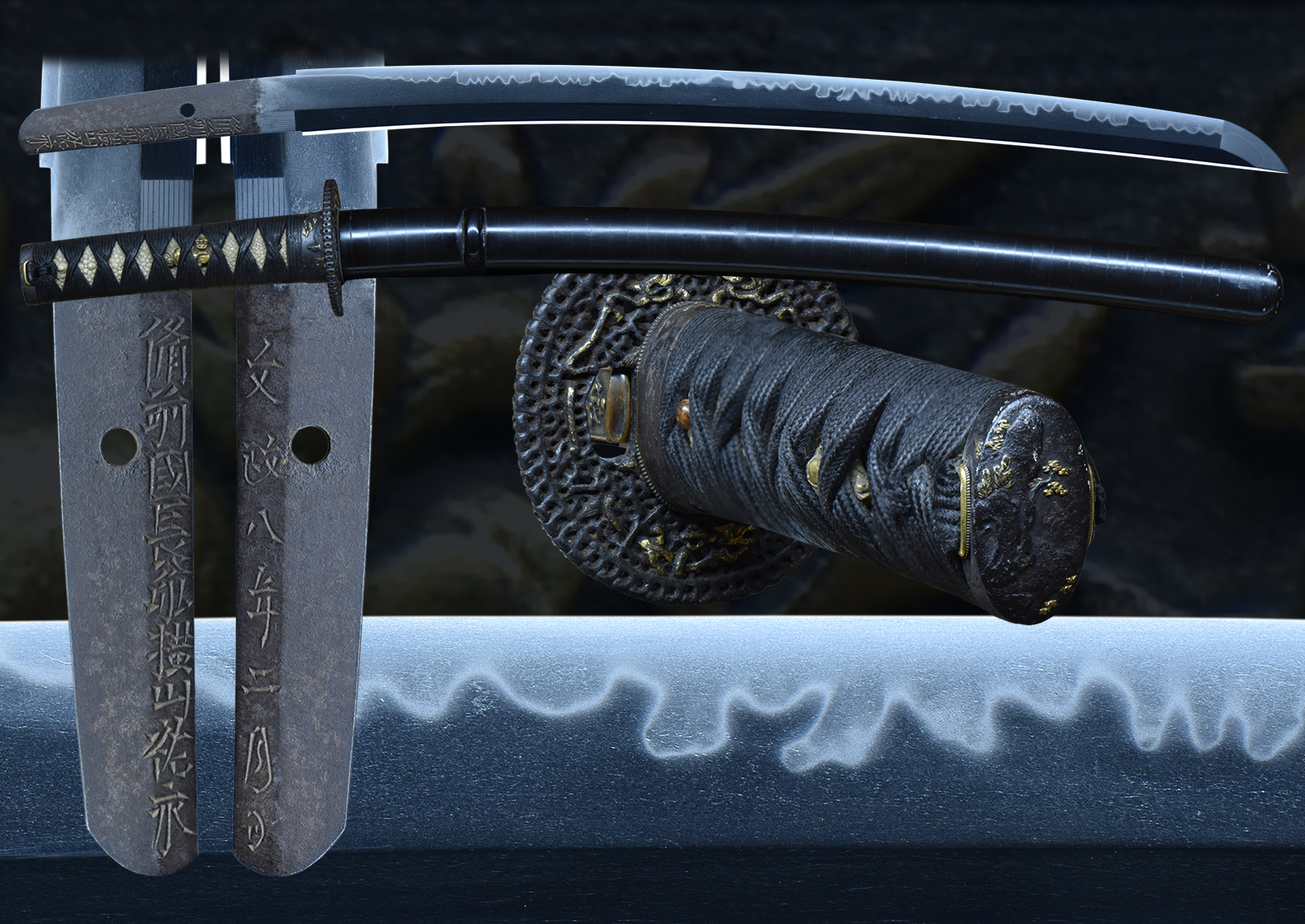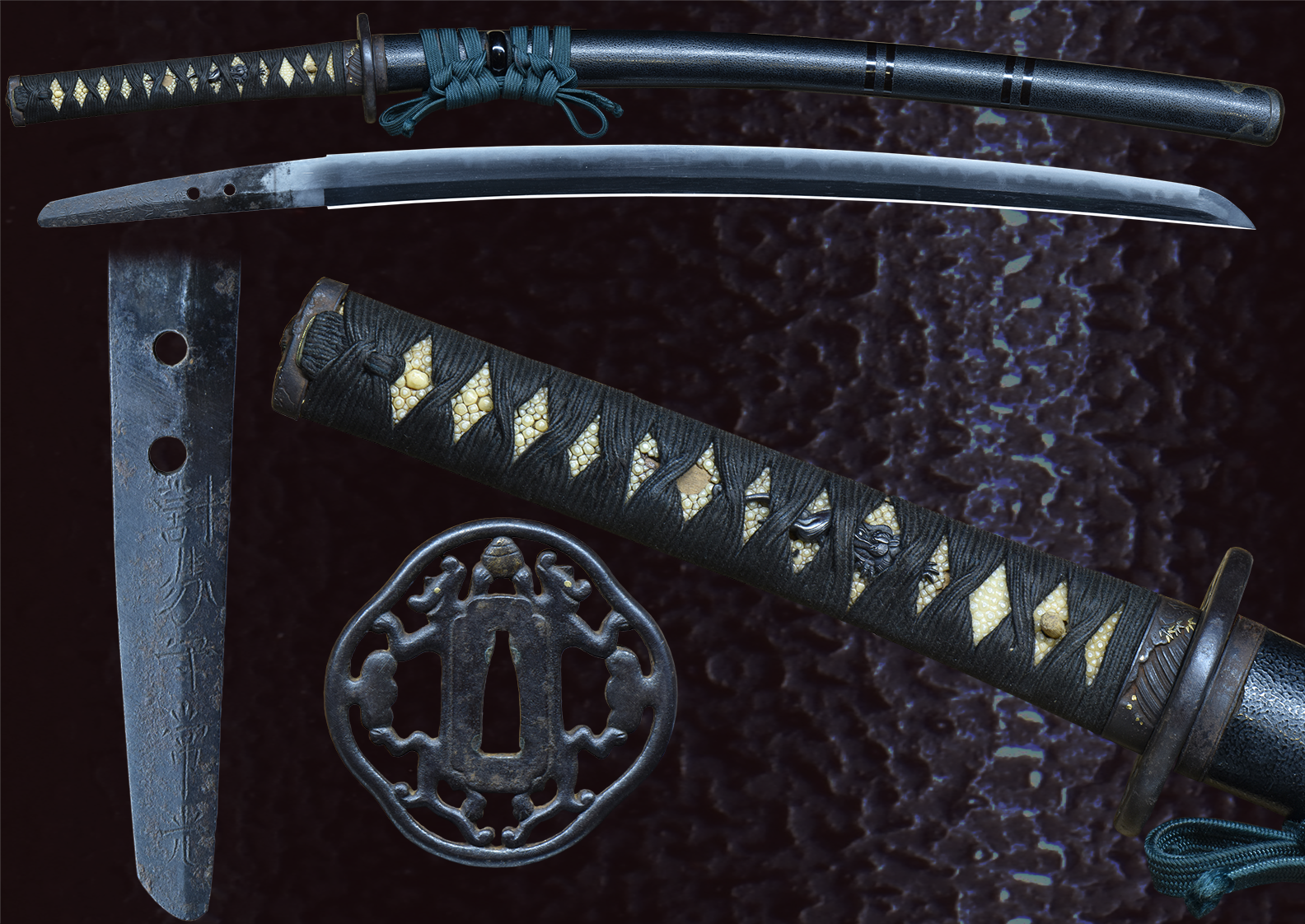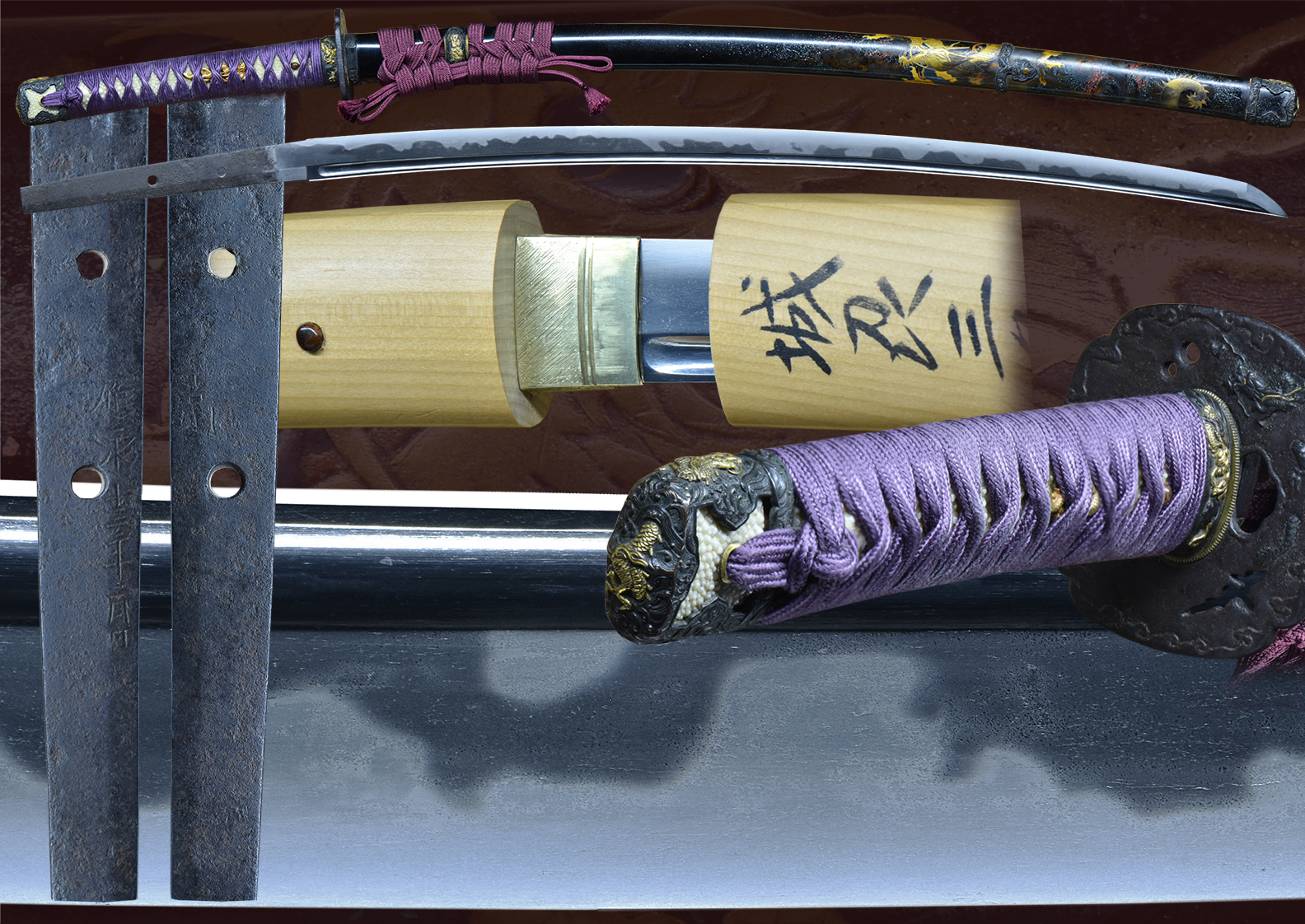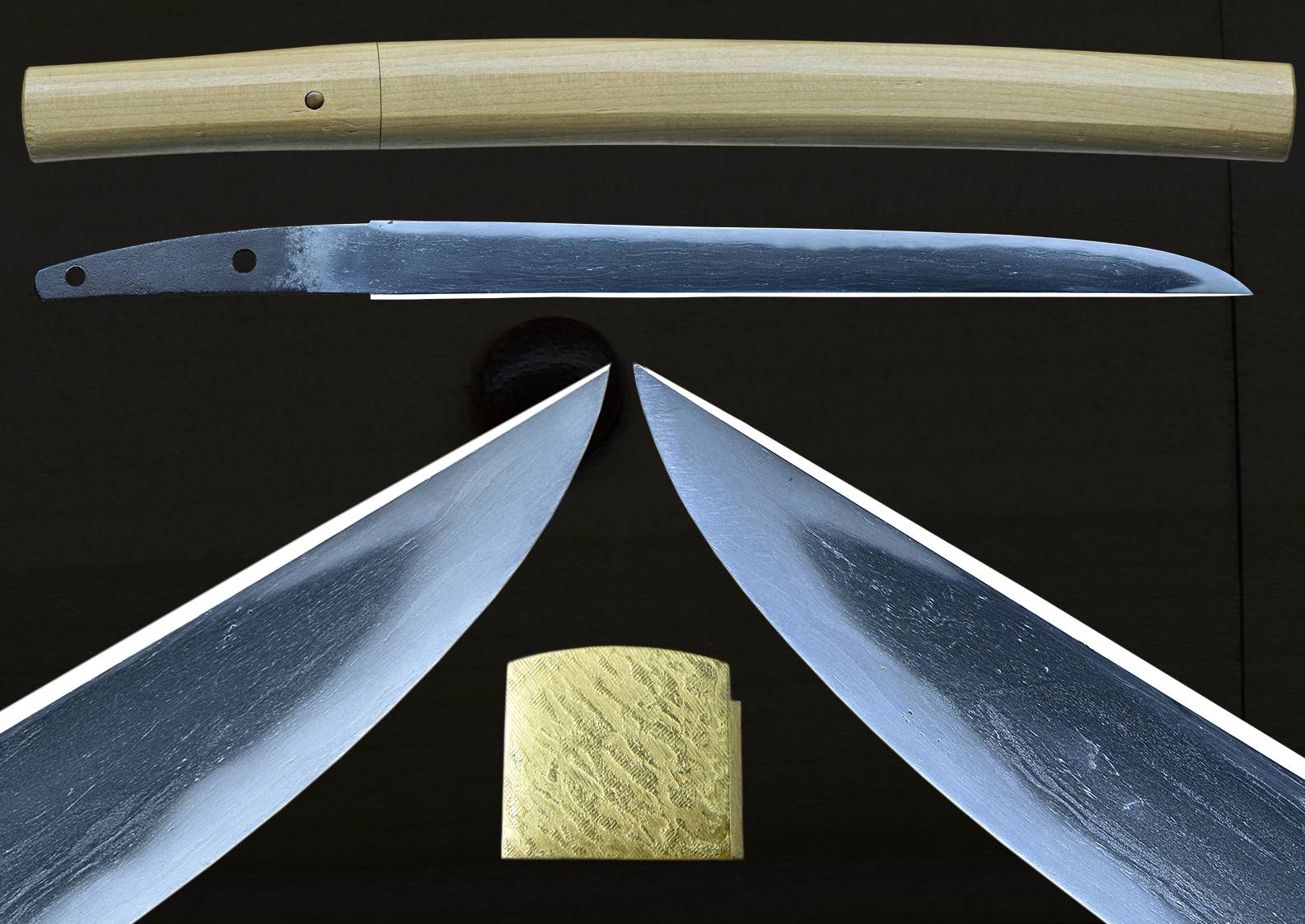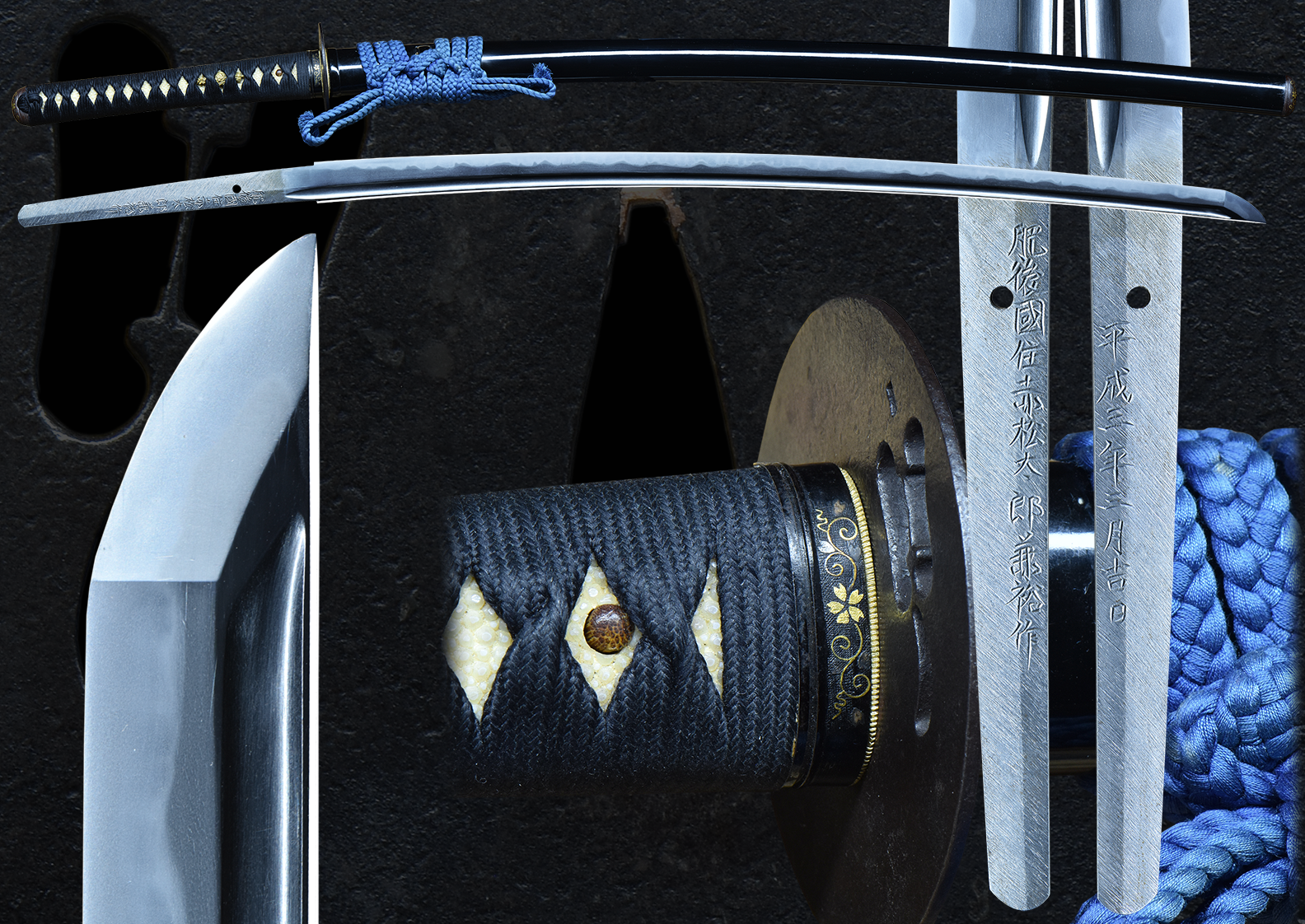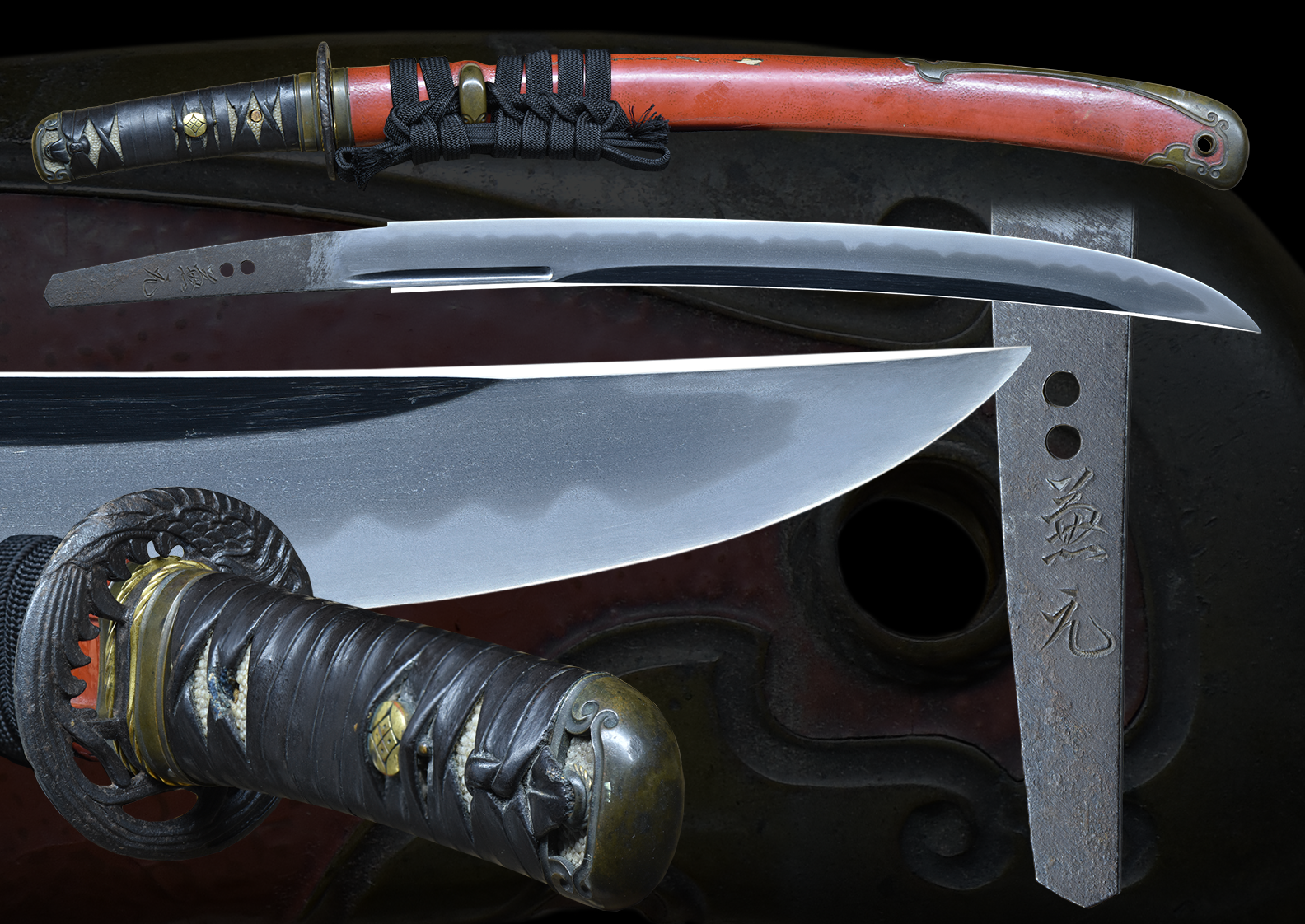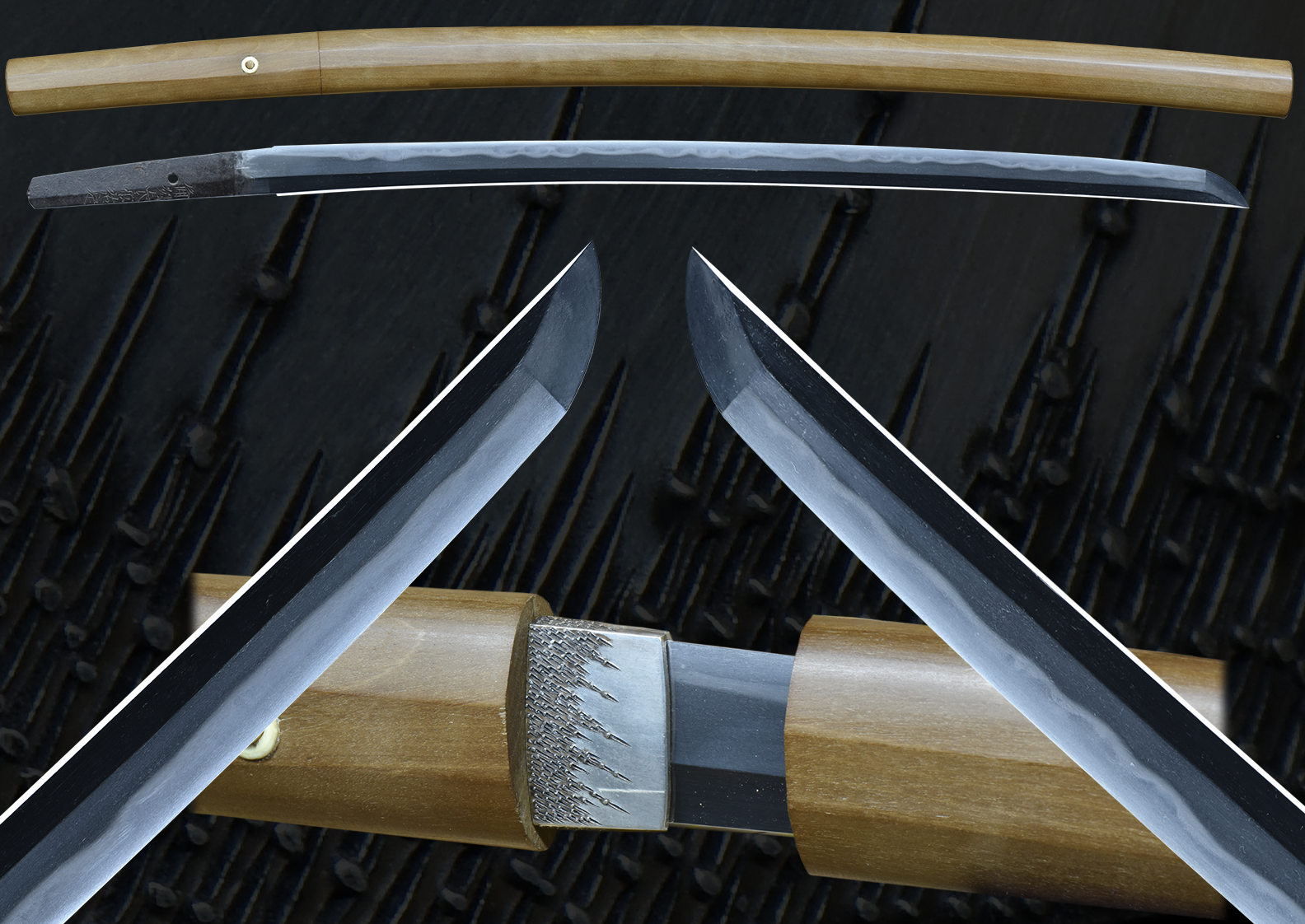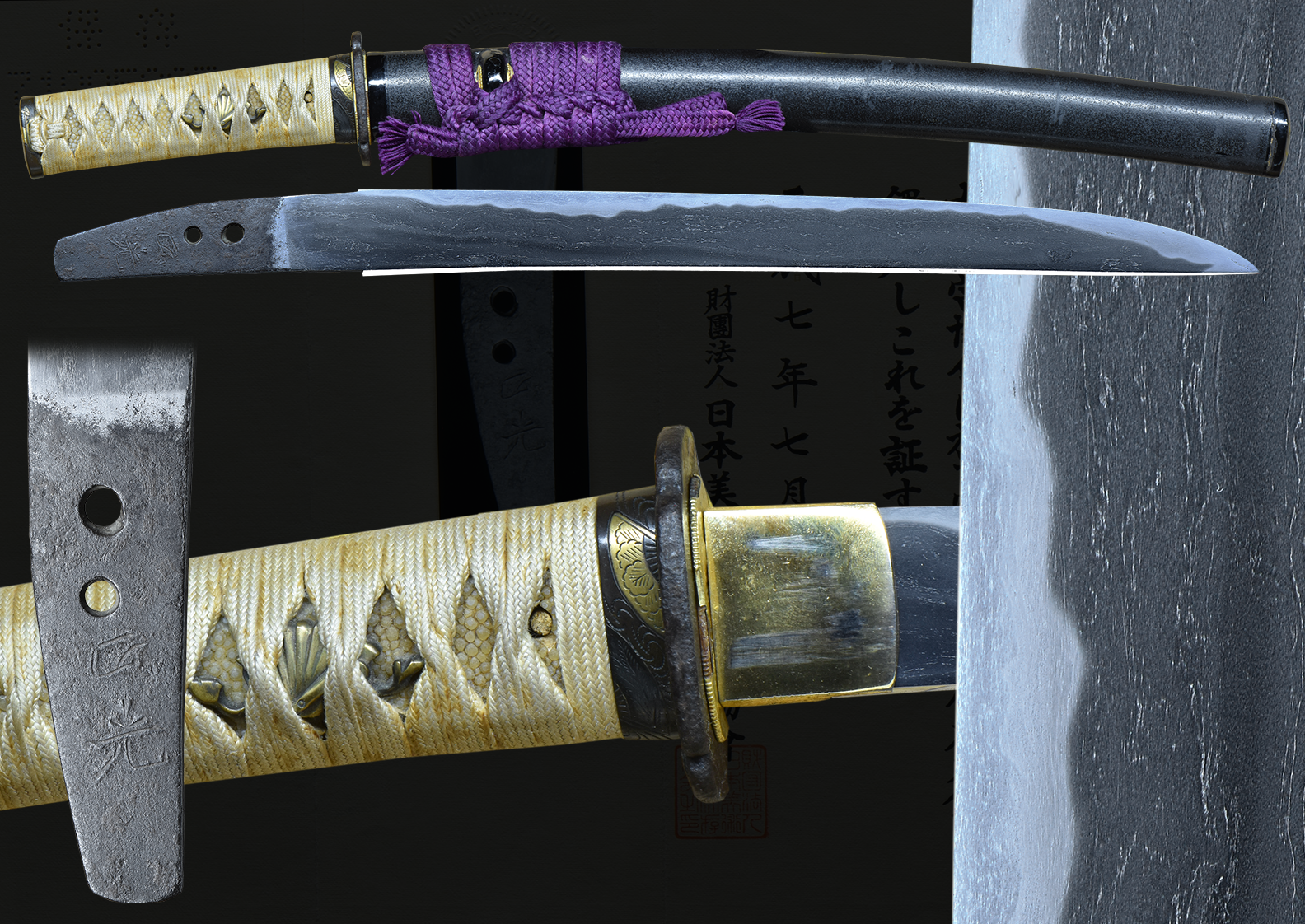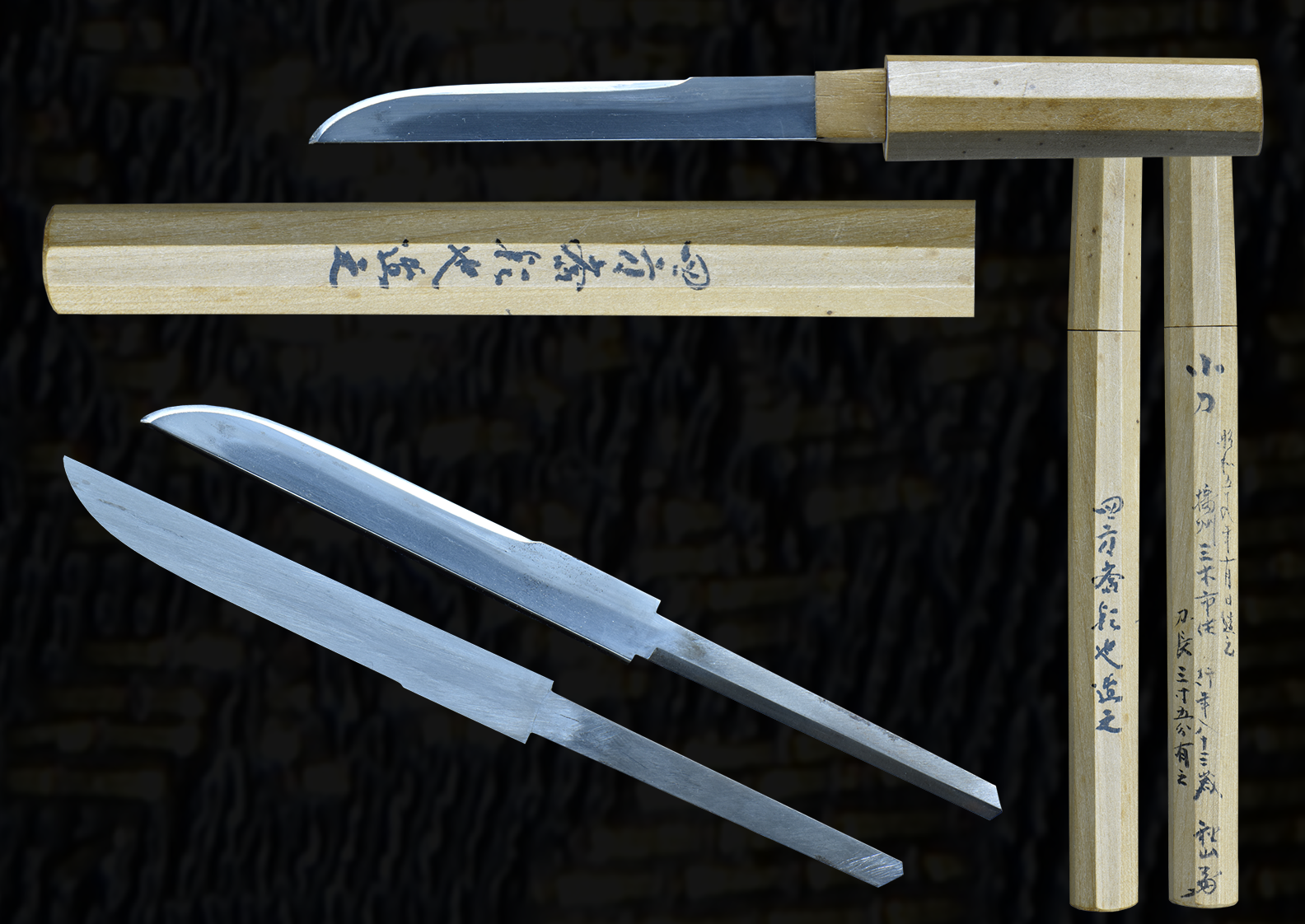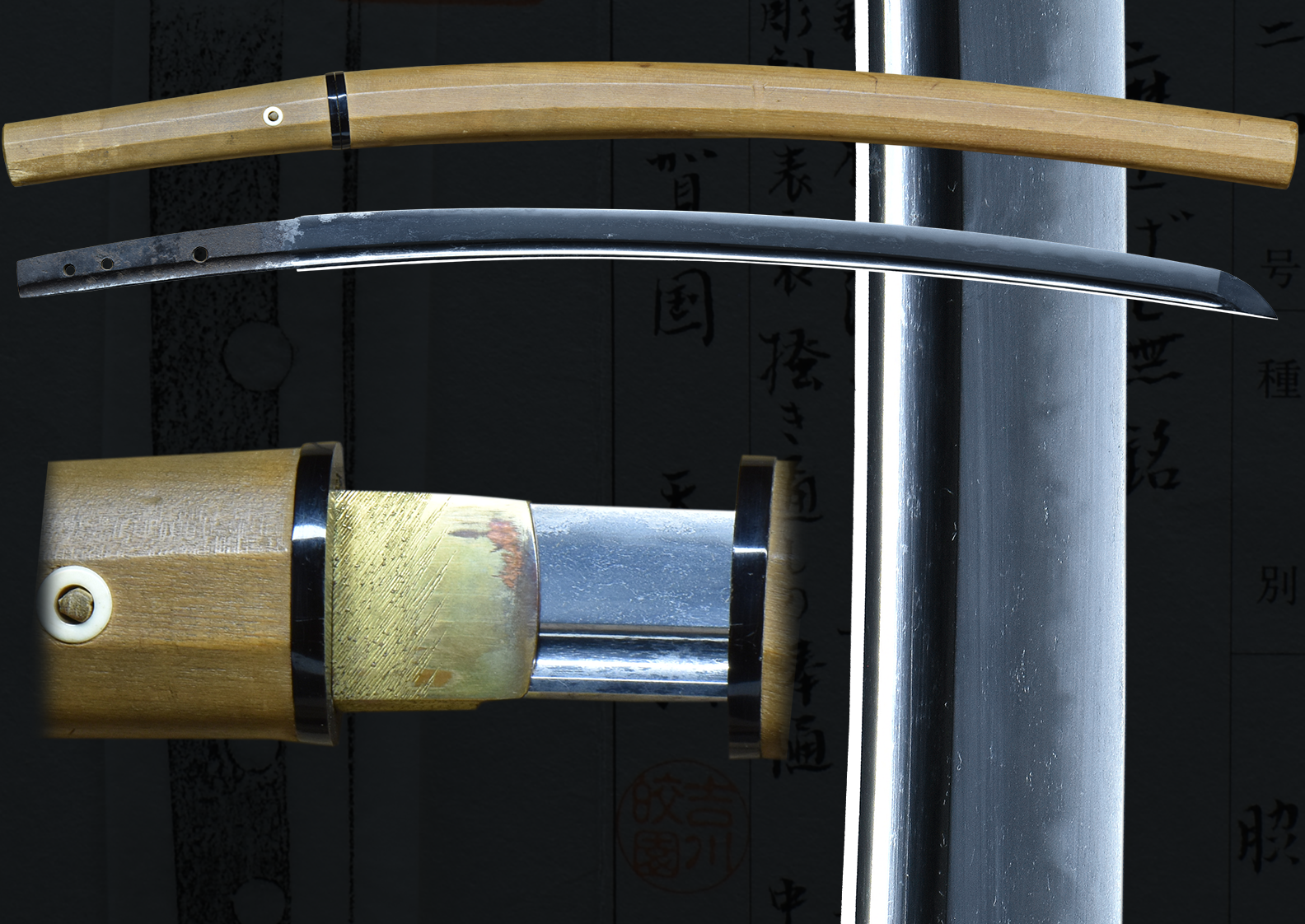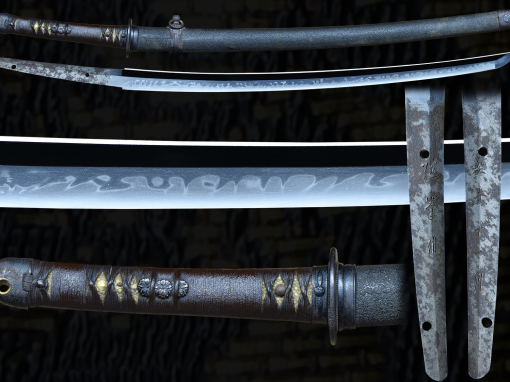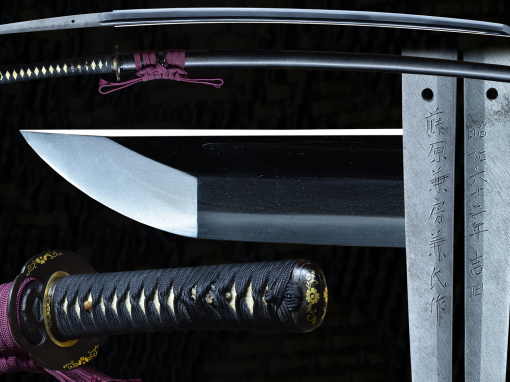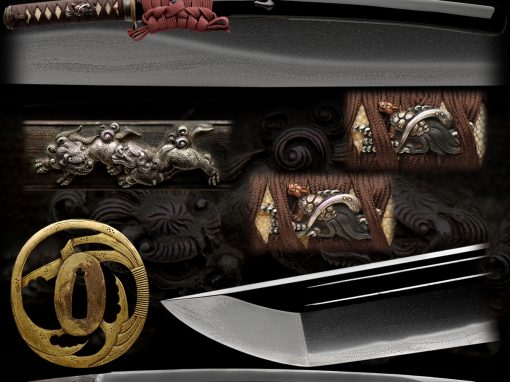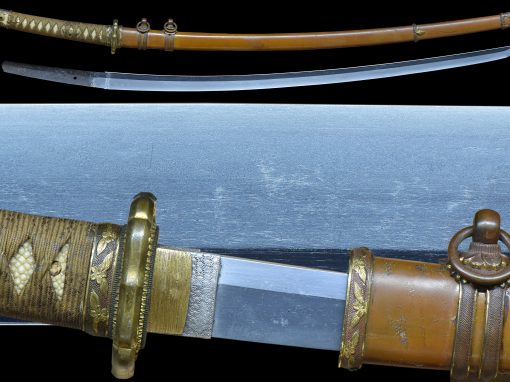This stunning Echizen blade from the Shinto era comes in koshirai and is in a fine Japanese polish. The work on this sword is very elegant and exciting at the same time. In the hamon you can see tsunagashi and kinsuji with a well defined habuchi with some ko-nie to frost the top and in the valleys are much Nie to be seen.. The hada is well forged and in great shape for such beauty of a blade with some masame running here and there entwined with itame and mokume. Ji-nie appears. The style is that of shinogi-zukuri with double bohi carved.
The tang is signed:
Chikugo no Kami Fujiwara Kanenori
Echizen-jû -on the reverse
2nd generation Echizen Kanenori (包則)
From the later Muromachi period onwards, Mino province saw a steady outflow of swordsmith, a trend that saw its peak in the Momoyama and early Edo period. Reason was for the most part the then significant demand for swords and thus local daimyô began to recruit famous masters to work for them on their lands. Mino bldes, or Seki blades in particular, were regarded as being durable and sharp and so a downright wave of migration of Mino/Seki swordsmiths can be seen, especially in the neighboring provinces of Owari and Echizen. As for Echizen, the province also gave a new home to many formerly Ômi-based Shimosaka smiths, thus we use classifications like “Echizen-Seki” (越前関) and “Echizen-Shimosaka” (越前下坂) to refer to these two different currents. The “trend-setters” of the Echizen-Seki group were first and foremost the Tenbun-era (天文, 1532-1555) Kanenori (兼法) and the two Keichô-era (慶長, 1596-1615) masters Kanenori (兼則) and Kanetsune (兼常).
The smith in question, i.e. the 2nd generation Kanenori (包則), belonged to the Kanenori (兼則) lineage whose ancestor was a smith of the same name who had moved some time during the Tenbun era from Mino to Echigo province. His son, who continued the very same name Kanenori (兼則) and who moved to Echizen, is now counted as 2nd generation of this lineage. The 2nd generation had a younger brother who too bore the name Kanenori but who used the character (包) for Kane. His first name was Shinpachi (新八) and he died in Kan’ei 19 (寛永, 1642) at the age of 68.
His son, who succeeded him as 2nd generation Kanenori (包則), affiliated himself with the local Echizen-Shimosaka School (probably through marriage), was allowed to use the family name Shimosaka, and is thus known under the real name Shimosaka Ichizaemon (下坂市左衛門). He was active around Kanbun (寛文, 1661-1673) and was successively granted with the honorary titles Chikugo no Daijô and Chikugo no Kami. His years of birth and death are unknown but we know blades from Kan’ei (寛永,1624- 1644) to Enpô (延宝, 1673-1681). His blades are ranked wazamono.
There was also a 3rd and last generation of this Kanenori (包則) lineage who was active around Jôkyô (貞享, 1684-1688), who also worked in Edo, and who was granted the honorary title Yamato no Daijô.
Niju-ba appears in the boshi and the sword has an old koto feel to it even though it is a Shinto piece. The sword was awarded Tokubetsu Hozon papers which attest to the quality of this sword and is well sought after by the sword collector.
The koshirae is a well made and of a good. The Sageo is a Blue and white blend to match the blue ito and same. The menuki are of dragons:
An unusual koshirae this intricately detailed mounting reminds one of the Han Dachi that were carried in the late 19th century. Finished in a beautiful black lacquer. A deep rich shakudo of constellation theme and blackbirds are depicted on the fuchi / kashira. A rare and exciting mounting for an outstanding Shinto blade.This piece is to be enjoyed for its fine detail and rarity in remarkable condition. the tsuba is of swirling cloud like shapes
- Mei: Chikugo no Kami Fujiwara Kanenori
Echizen-jû -on the reverse - Date: Edo
- Nagasa: 27-3/4 inches
- Sori: 15.0 mm
- Width at the ha-machi: 31.2 mm
- Width at the yokote: 20. mm
- Thickness at the mune-machi: 7.5 mm
- Construction: Shinogi zukuri
- Mune: Iori
- Nakago: Ubu
- Kitae: Itame/mokume
- Hamon: Midare Gunome
- Boshi: Maru
- Condition: Good polish
(shipping and insurance included)
Email us if your interested in this item and remember to include the order number for this item: fss-713.
Click to Enlarge Image
Click to Enlarge Image
kantei-sho (鑑定書) No 154029 katana, mei: Chikugo no Kami Fujiwara Kanenori (筑後守藤原包則)
Echizen-jû (越前住)
nagasa 2 shaku 3 sun 2 bu han Migi wa tô-kyôkai ni oite shinsa no kekka, tokubetsu-hozon-tôken to kantei-shi kore o shô-suru.
(右は當協會に於て審査の結果特別保存刀剣と鑑定しこれを証する)
Heisei nijûichinen shichigatsu yôka (平成二十一年七月八日)
zaidan-hôjin (財團法人): Nihon Bijutsu Tôken Hozon Kyôkai (日本美術刀劍保存協會)
Appraisal
katnaa, signed: Chikugo no Kami Fujiwara Kanenori Echizen-jû
nagasa ~ 70.5 cm According to the result of the shinsa committee of our society we judged this work as authentic and designate
it as tokubetsu-hozon-tôken. Juli 8th 2009
[Foundation] NBTHK
Subscribe for the Latest Updates!
Join our mailing list to receive the latest News & Updates from Nihonto Antiques.
You have Successfully Subscribed!
For Sale
